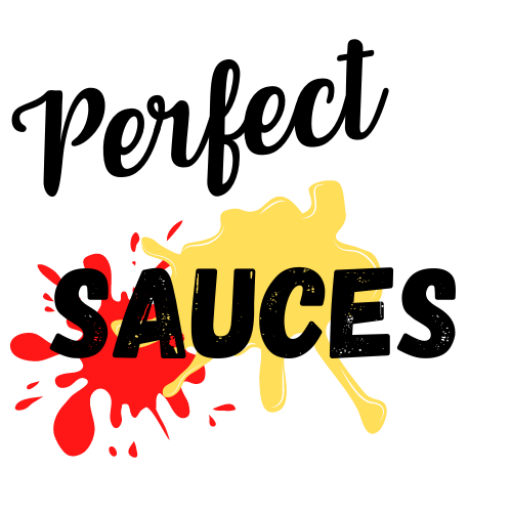When it comes to Japanese cuisine, soy sauce stands as the pinnacle of sauces to use. However, there’s another sauce that’s gaining popularity in recent years – ponzu sauce. These two flavor enhancers hail from the heart of East Asian culinary sauces, each carrying a distinct profile that can bring your dining experience to new heights.
So, with both showing promise in use, let’s compare them and see which is better for you. Ponzu sauce vs soy sauce. The ultimate showdown of everything and anything ponzu and soy sauce.
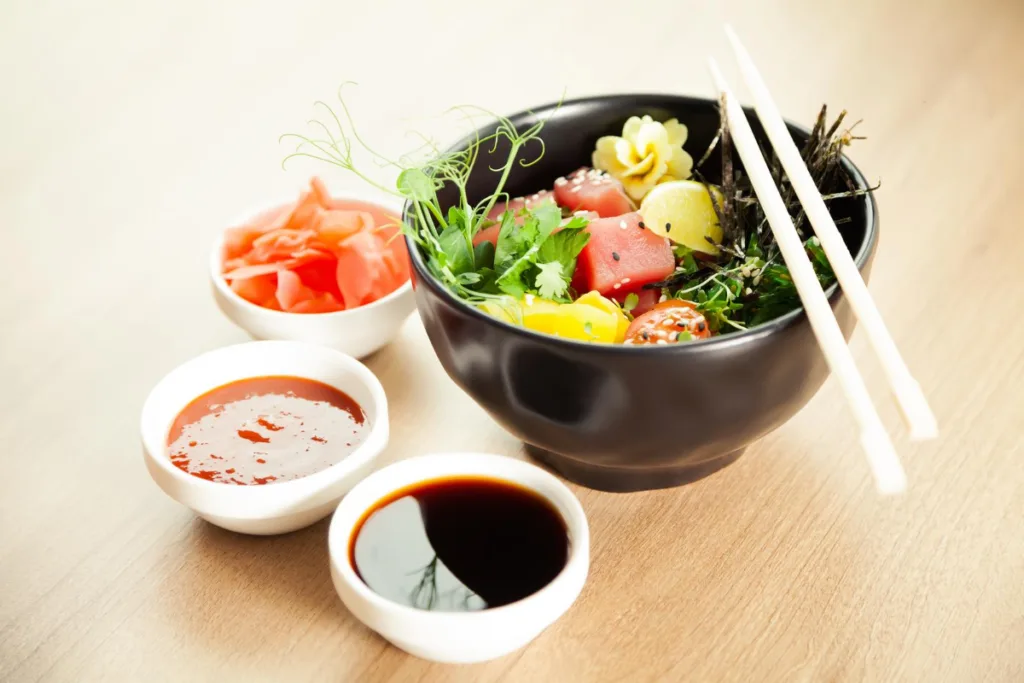
Jump To
What is Ponzu Sauce?
Ponzu sauce is a popular Japanese condiment with a tangy and slightly sweet flavor, with a hint of umami from the soy sauce. It’s commonly used as a dipping sauce or marinade and combines soy sauce, rice vinegar, katsuobushi flakes, and citrus juice, typically from yuzu fruit. The name “ponzu” comes from the Japanese words “pon” (meaning vinegar) and “zu” (meaning sauce).
This sauce can be used as a dipping sauce for sushi, sashimi, and other seafood dishes, as well as a marinade for meats like chicken, beef, and pork. The acidity of the citrus juice in ponzu sauce helps to tenderize the meat and add flavor.
But on top of the traditional yuzu citrus, other types of citrus fruits like lemon, lime, or orange extract can be used to make the sauce. Some variations may even include additional ingredients, such as mirin (a sweet rice wine) or dashi (a Japanese stock made from fish and seaweed).
What is Soy Sauce?
This dark, salty liquid is made from fermented soybeans, wheat, salt, and water. It has a thin consistency and is commonly used in dishes such as stir-fries, marinades, and dipping sauces. There are several different types of soy sauce available, as you’ll soon find out:
- Regular Soy Sauce: This is the most common type of soy sauce made from a combination of soybeans, wheat, salt, and water. It has a salty, umami flavor and is often used as a seasoning in cooking.
- Dark Soy Sauce: This type of soy sauce is made from the same ingredients as regular soy sauce, but it’s aged for a longer period of time. It has a darker color and a richer, more complex flavor.
- Light Soy Sauce: This type of soy sauce is made from the same ingredients as regular soy sauce, but it has a lower concentration of salt, a lighter color, and a milder flavor.
- Tamari Soy Sauce: This soy sauce is made from soybeans and does not contain any wheat. It has a slightly sweeter flavor than regular soy sauce and is often used as a gluten-free alternative.
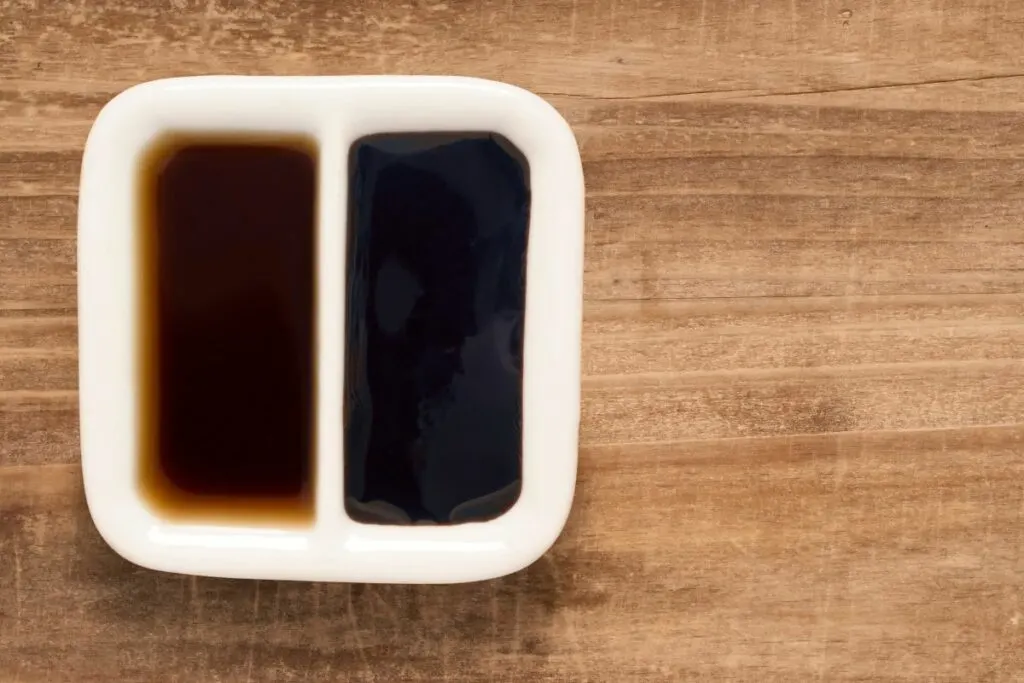
Similarities and Differences Between Ponzu Sauce and Soy Sauce
Ponzu sauce and soy sauce are two popular condiments found in many Asian dishes. While they may seem similar at first glance, they have distinct differences in their ingredients, flavor profiles, and nutrition. Understanding these differences can help you choose the right sauce to enhance your dish and bring out its unique qualities.
Ingredients
The core ingredients of soy sauce are soybeans and wheat, which are combined with water and left to ferment for several months. The mixture is then pressed to extract the liquid, which is pasteurized and bottled.
Ponzu sauce, on the other hand, is made by combining soy sauce with rice vinegar, citrus juice, katsuobushi flakes, and mirin. The soy sauce provides a salty flavor, while the rice vinegar and citrus juice give it a tangy, acidic taste. Mirin is added to balance out the flavors and give the sauce a slightly sweet taste.
Fermentation
Both soy sauce and ponzu sauce undergo a natural fermentation process that relies on the activity of microorganisms to break down the ingredients and create new flavors. However, the fermentation process for soy sauce is longer and more complex than ponzu sauce.
Soy sauce is made by fermenting soybeans and wheat with mold, resulting in a rich, savory flavor. The mixture is then combined with salt and water and left to ferment for several months to several years. Now, while soy sauce is a primary ingredient in ponzu sauce, it’s not the main focus of the fermentation process, though it does use it as a fermented base.
The ingredients are all simmered, with katsuobushi flakes being removed afterward and left for fermenting. The acidity from the vinegar and citrus juice also helps to balance the saltiness of the soy sauce and adds a bright, tangy flavor to the ponzu sauce.
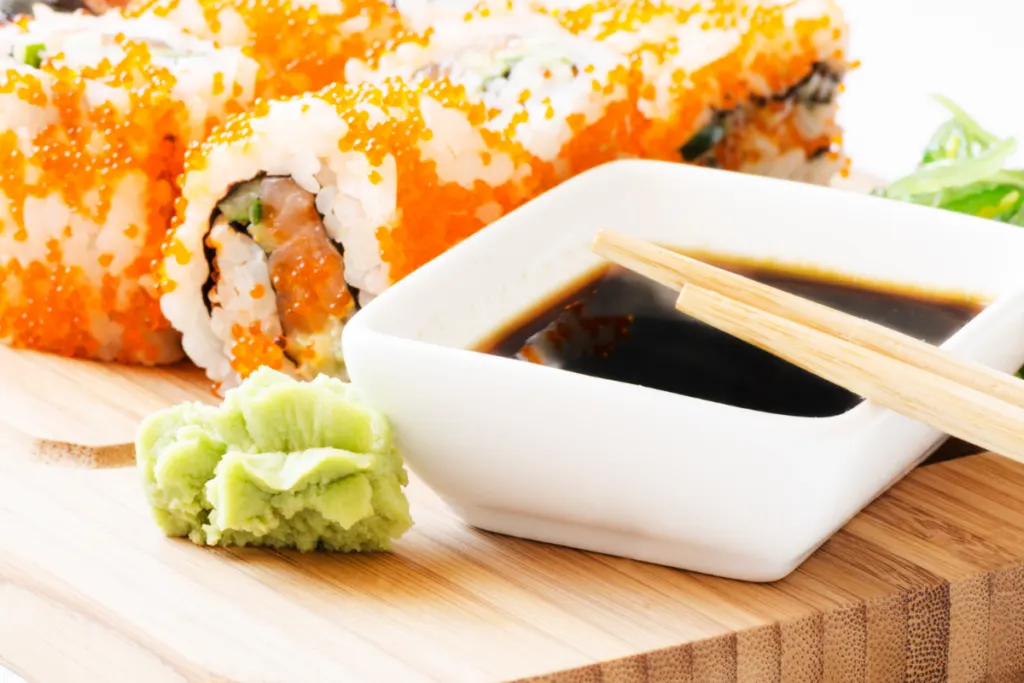
Flavors
Ponzu sauce is a thinner, more liquid sauce with a citrusy flavor that adds a refreshing twist to dishes. A popular choice for those who prefer a tangy taste. Soy sauce, on the other hand, has a rich, salty flavor with a hint of sweetness and umami.
Colors
The color of soy sauce can range from a deep reddish-brown to almost black due to the Maillard reaction during fermentation.
Ponzu sauce, though, is a light brown or amber-colored sauce made from a combination of soy sauce, rice vinegar, and citrus juice, usually from yuzu or lemon. The addition of citrus juice lightens the color of ponzu sauce, making it much lighter than soy sauce.
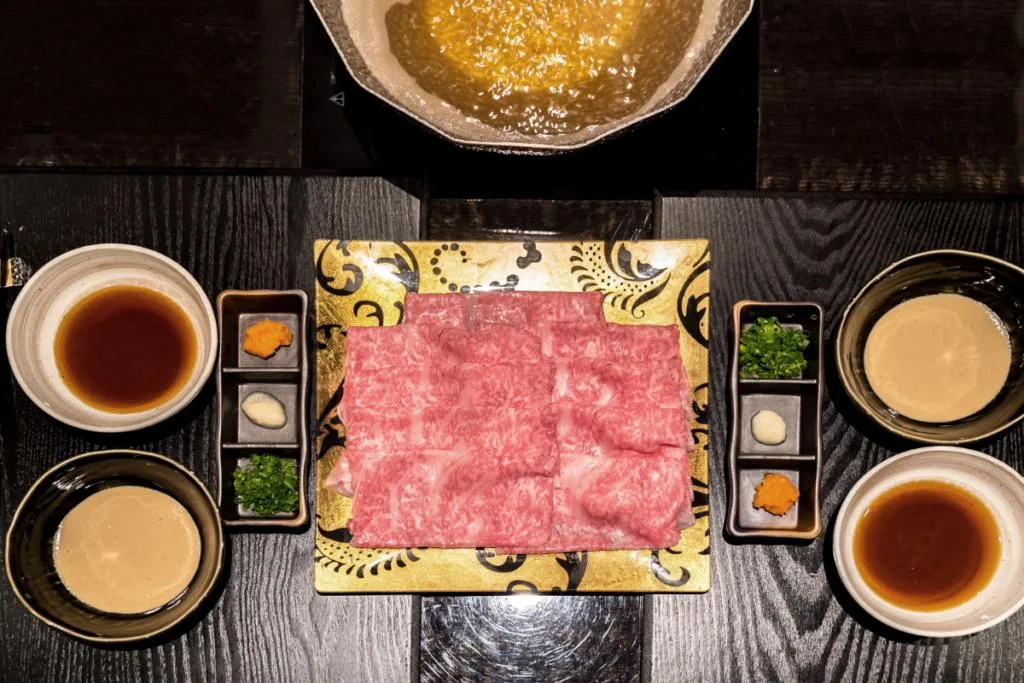
Nutrition
Both ponzu sauce and soy sauce are low in calories, fat, and cholesterol and high in sodium. Ponzu sauce also contains vitamin C and antioxidants from citrus juice, while soy sauce is a good source of protein, iron, and antioxidants. However, it’s also high in sodium, so it should be used in moderation.
Can You Use Ponzu Sauce in Place of Soy Sauce and Vice Versa?
While they do share some similarities in taste and texture, they are not interchangeable. Ponzu sauce is a tangy citrus-based sauce typically containing soy sauce, while soy sauce is a salty and savory sauce made from fermented soybeans. This difference in flavor is a big deal when it comes to recipes. This is why it’s best to use each sauce as intended to achieve the desired flavor.
When to Use Ponzu Sauce vs. Soy Sauce
Ponzu vs soy sauce. Choosing between either sauce can be a difficult decision. So here are some factors to consider when deciding which sauce to use:
Ponzu Sauce
Ponzu sauce is best used when you want a tangy, citrusy flavor to complement your dish, particularly with seafood, vegetables, and grilled. It even works well with grilled fish or seafood, chicken or pork sauced skewers, tofu and vegetable stir-fry, seaweed salad, cucumber salad, cold noodles like soba or udon, grilled vegetables like eggplant or zucchini, and shabu-shabu or hot pot dipping sauce.
Soy Sauce
Soy sauce adds a salty, savory flavor that works well in stir-fries, noodle dishes, sushi, and many other Asian dishes. You can use it as a dipping sauce for sushi, dumplings, and other steamed or fried foods or as a seasoning in marinades, dressings, and sauces. Soy sauce can also be used to add depth of flavor to soups and stews or as a seasoning for roasted or grilled meats and vegetables.
